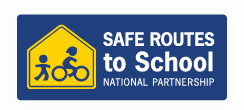 |
| Cruising down the street at a CicloSDias event in Pacific Beach |
As Joe Linton writes, there were two Open Streets events this Saturday in the LA area. One, in Lawndale, opens a two-mile route from 8 am to 10 am. The second, in Burbank, allows cyclists who pre-register to ride a one-mile parade ride (the streets were already closed) for an hour and a half before the parade starts.
In both cases, Linton questions the short duration, minimal length of the route, early hours (too early for many adjacent businesses to be open), and (in the case of Burbank) pre-registration requirement. I'd add the requirement (in Lawndale) that kids under 13 be accompanied by an adult to the list of concerns. I was well under 13 when I rode my bike unaccompanied to school, piano lessons, and who knows where else--certainly more dangerous places than a car-free public street full of vigilant adult eyes.
Linton suggests that events like these, with their many restrictions and short duration, don't really demonstrate the benefits of a "true" Open Street event, where long routes full of engaging activities help the public imagine different (and maybe even better!) ways of using street space than just for moving cars. He points out that these lackluster "ciclovia-itas" might even backfire, giving critics an easy example to point to when they complain that it isn't worth the trouble to close streets to traffic.
To these criticisms I'd also add my own, which I think can be a problem with many ciclovia events: they're too bike-centric. As a cyclist I love biking and enjoy the ability to zip down a street unencumbered by pesky automobiles. As a pedestrian, I feel nervous about wandering a street filled with less-than-expert cyclists pedaling in every direction--and I definitely wouldn't turn my unpredictable two-year-old loose in that sort of environment.
Open streets events are often sold as a way to highlight and encourage visitors to local businesses that line the route. But it's pedestrians who visit those businesses, not cyclists (unless they're riding their bikes into the business, a cyclist becomes a pedestrian once they dismount). I'm not saying that who can't open streets to both modes at the same time, but if you look at the Burbank and Lawndale events (as an example), they're billed as primarily biking events. The "ticket" to the Burbank event is even a bike-shaped pin.
If we want to have successful Open Streets events that fulfill the true intent of the Ciclovia movement, we do need to make sure the routes and hours are long enough to provide value to participants. But we also have to make sure that all users feel safe and welcome along the Open Street route. Otherwise, the street is only "half-open" to pedestrians.







